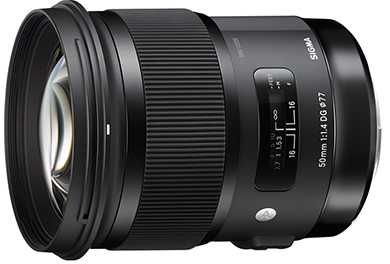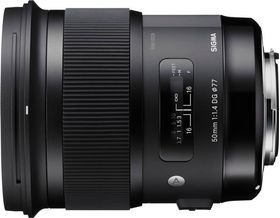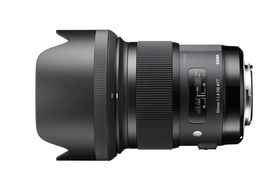Incredible resolution ideal for the high-megapixel era.
Introducing the new benchmark large-aperture standard lens.
Top optical performance makes it the ultimate go-to lens.An icon of SIGMA quality, this is the ideal standard lens.
SIGMA was the first lens manufacturer to introduce a 50mm F1.4 lens. Now, to create the ultimate go-to lens, we took optical performance and image quality to the limit. The result is a true icon of SIGMA quality. Fulfilling the concept of our Art line at the highest level, the 50mm F1.4 DG HSM is a large-aperture standard lens that delivers top performance. Its outstanding resolution makes it ideal for the high-megapixel era. It delivers exquisitely balanced images with a beautiful bokeh effect, setting a new benchmark for large-aperture standard lenses. It is the ultimate expression of the 50mm F1.4 specification, known to bring out the photographer’s unique personality and approach. Once you own it, you’ll never want to be without it!
The full realization of the Art product concept for you to hold in your own hands and appreciate with your own eyes.
Designed with a focus on sophisticated optical performance and tremendous expressive power, our new Art line of lenses delivers top-level image quality. With unsurpassed expressive performance, these lenses reach the high standards demanded by photographers with an artistic, creative inclination. Along with landscapes, portraits, still-life, close-up and casual snaps, they're perfect for the kind of photography that unleashes the inner artist. Ideal for studio photography, they offer just as much expressive scope when capturing architecture, starry skies, underwater shots and many other scenes. The full realization of the Art concept, the 50mm F1.4 DG HSM is the perfect flagship. Hold it in your own hands and appreciate it with your own eyes.

A 50mm F1.4 large-aperture lens offers an angle of view similar to human vision, a beautiful bokeh effect, and expressive versatility. It’s a basic specification that lets photographers take many different approaches to their craft. For this very reason, it demands a high level of fundamental performance. SIGMA has designed lenses especially for digital SLRs since they first appeared on the market. In 2008, we first introduced the SIGMA 50mm F1.4 EX DG HSM. Although compared to the lenses of today it had a fairly large body, this lens offered uncompromising performance and embodied our ideal of the standard lens. Until this time, only camera manufacturers had produced a lens in this specification for DSLRs. Our version of this go-to lens created quite the stir at first. Earning the support of photographers with its exceptional performance, it has become one of our representative lenses. The SIGMA F1.4 DG HSM fulfills our design concept and quality requirements at the highest level. While producing a beautiful bokeh effect, it features exceptional peripheral brightness and minimal distortion. Uncompromising in every detail, this large-aperture standard lens offers the ultimate in image quality. Its high resolution makes it perfect for the high-megapixel era. Resolution is extremely crisp at the area in focus, while both front and rear bokeh are silky-smooth. Offering the ultra-high performance that characterizes our Art line, this lens inherits the design principles of the line’s first model, the flagship SIGMA 50mm F1.4 DG HSM.
Minimized sagittal coma flare
An ideal large-aperture standard lens offers outstanding image quality across the image plane, even at wide-open aperture. Sagittal coma flare is an optical aberration in which point light sources near the image periphery have a tail (“coma”) instead of appearing round. To minimize this aberration, we have included a precision-molded aspheric lens element in the rearmost lens group. Since it minimizes the streaking of point light sources near the edge of the image, this lens is an excellent choice for shooting heavenly bodies and nighttime illumination. In addition, its beautiful bokeh effect makes it a great go-to lens for portraits, interior shots, and many other applications.
High peripheral brightness
Large-aperture lenses are prone to reduced peripheral brightness. In this lens, we have made the forward lens group large-aperture, thereby raising aperture efficiency. The result is minimal reduction of brightness at the image periphery and even image quality throughout the photograph. Even at the wide-open aperture, you can shoot a blue sky without fear of reduced brightness and achieve a beautiful bokeh effect at the same time.
The x-axis represents image height (distance from center of image in mm), and the y-axis represents the relative illumination at the edge of the image (with illumination at the center of the image defined as 100%). When relative illumination is low, the corners of the image appear dark, resulting in vignetting.


